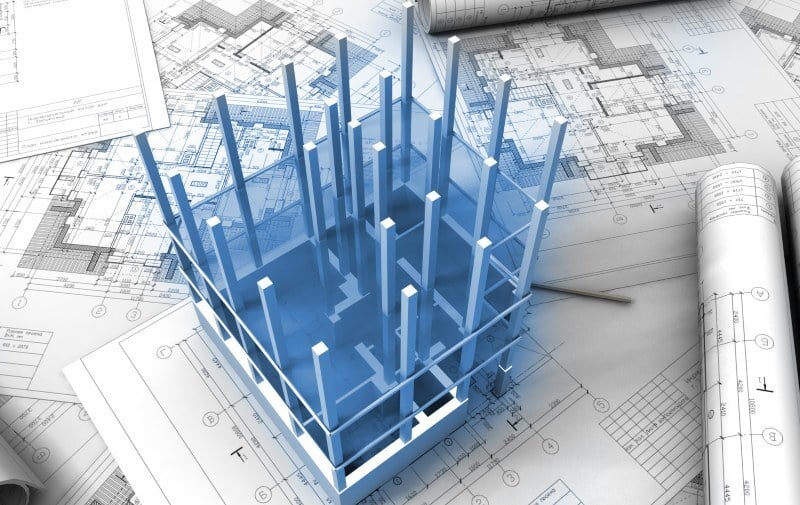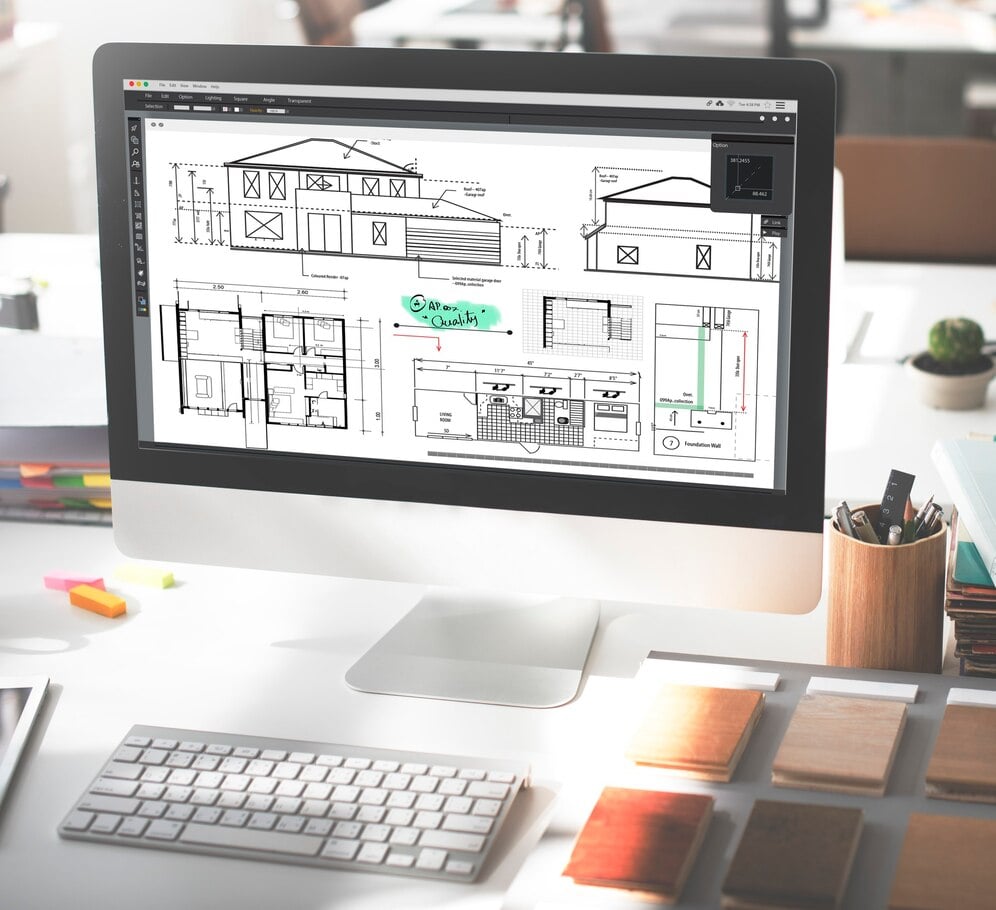.png)
In 2025, the construction and architecture industries are rapidly transforming through BIM modeling trends. According to a report by the U.S. Department of Commerce, BIM adoption expanded from 17% to 71% in six years, demonstrating impressive growth despite the recent economic pressures. As design-build methods evolve, BIM modeling services are becoming central to efficient, accurate, and collaborative project execution. Companies are investing in advanced BIM software to streamline workflows and stay ahead of the competition.
This guide explores key trends shaping the future of BIM modeling, from automation to sustainability. If you're wondering what is BIM modeling, how to create BIM models, or how to become a BIM modeler, you're in the right place
What Are the Emerging Technologies in BIM Modeling?

Modern BIM modeling extends far beyond 3D architectural modeling; it is now a comprehensive approach to construction planning, analysis, and coordination. Emerging technologies continue to reshape how architects, engineers, and contractors approach building design and project management.
1. Cloud-based BIM Platforms
These platforms allow stakeholders to access and collaborate on projects in real time, ensuring seamless updates and reducing miscommunication across teams.
2. AR/VR in BIM
It enables immersive visualization and real-world context for design decisions, allowing clients and teams to identify flaws early.
3. Digital Twins
These are dynamic, real-time digital replicas of physical assets. By integrating sensor data, they help teams monitor performance and predict maintenance needs.
4. IoT and AI Integration
This improve predictive analytics and enable real-time alerts for potential clashes or inefficiencies.
5. Prefabrication and Modular Construction
These benefit greatly from BIM modeling by ensuring accurate measurements, which reduce material waste and construction time.
Also Read: Architecture Thesis Topics: A Comprehensive List of 30 Topics to Pick From 2025
6. Interoperability
This in BIM modeling software is critical to ensuring teams using different tools can still collaborate effectively across disciplines.
7. Sustainability
These initiatives now rely on BIM technology to conduct energy simulations, carbon assessments, and lifecycle analyses early in the design phase.
8. 3D Printing
This is increasingly used in construction to produce components modeled from BIM 3D models, allowing for faster and more customized building elements.
9. Laser Scanning and Drone Services
These capture accurate site data, which can then be processed into detailed 3D BIM modeling environments.
10. Automation in BIM
This automates repetitive modeling tasks and facilitates faster delivery of documentation, saving time and reducing errors.
11. Generative Design
This uses AI algorithms to suggest design alternatives based on constraints like space, cost, and environmental factors.
12. 5D and 6D BIM Models
This bring cost estimation and facility management into the design process, improving transparency and lifecycle planning.
13. Robotics in Construction
Guided by BIM models, can automate bricklaying, site surveying, and material handling with precision.
These innovations are collectively redefining what a BIM modeler does and the scope of bim modeler job responsibilities in today’s fast-evolving AEC sector. With demand rising, more professionals are actively seeking bim modeler jobs to capitalize on these emerging opportunities.
How Is Automation & AI Changing BIM Processes?
AI and automation are two of the most significant drivers of change in modern BIM modeling trends. These technologies enhance productivity, minimize errors, and create intelligent design environments that respond in real time.
AI-powered applications now:
- Anticipate design clashes before they escalate into costly site errors
- Generate multiple layout options through generative design, speeding up the conceptual phase
- Assist with automated quality checks, flagging non-compliance or inefficiencies
- Estimate timelines and costs using 5D and 6D BIM models, supporting real-time budgeting
Automation, on the other hand, is helping:
- Convert scanned data into accurate 3D BIM modeling formats
- Standardize drawing production, reducing repetitive tasks
- Manage large datasets across disciplines, improving BIM project coordination
- Improve documentation workflows for professionals offering BIM modeling services
According to Glassdoor, the average bim modeler salary in the U.S. ranges from $51,000 to $92,000, showing the financial potential of careers in this field. Whether you're exploring bim jobs for the first time or upgrading your bim modeler skills, automation is now a must-have competency.
Also Read: Net-Zero Buildings: Guiding the Way Ahead for Sustainable Architecture
What Role Does Cloud-Based Collaboration Play in BIM?

One of the standout BIM modeling trends in 2025 is the integration of cloud technologies, making collaborative project delivery smoother than ever.
Cloud platforms enable:
- Real-time updates and editing for all contributors, reducing delays and increasing model accuracy
- Seamless communication between architects, engineers, and contractors, regardless of location
- Access control and security, ensuring the right team members view the correct models
- Continuous integration of changes across the entire BIM project lifecycle
This allows professionals to contribute to BIM modeling services without being tied to a physical office, making remote work and global project participation more practical than ever. As cloud-based workflows become the norm, those looking to understand “what does a bim modeler do” or how to become a BIM modeler must also gain expertise in these digital tools. Cloud-based platforms have also increased the reach of 3D BIM modeling services, empowering distributed teams to collaborate effectively.
How Is BIM Being Integrated with VR/AR for Visualization?
Another impactful development in BIM modeling is the integration of Augmented and Virtual Reality (AR/VR), which allows real-time, immersive engagement with building designs.
Use cases of VR/AR in BIM and construction include:
- Allowing clients to experience designs before construction begins, enabling more confident approvals
- Providing real-world spatial awareness to design teams, improving coordination
- Offering safety training for workers using virtual job site walkthroughs
- Creating engaging presentations to win over stakeholders in early project phases
This trend adds value to BIM modeling software by transforming how information is consumed and understood. Clients unfamiliar with technical drawings can now participate meaningfully in the design process. These innovations also deepen our understanding of bim meaning beyond modeling; it’s about facilitating smarter building decisions. Additionally, professionals involved in 3D BIM modeling services are finding these integrations essential for client presentations and stakeholder engagement.
Which Sustainability and Green-BIM Practices Are Trending?

Sustainability remains a core focus in BIM modeling trends, particularly as buildings are increasingly expected to perform efficiently over their lifespans.
Current Green BIM Approaches:
- Modeling for net-zero energy designs using simulation tools embedded in BIM software
- Life-cycle cost analysis and carbon footprint measurement using 5D and 6D BIM models
- Integrating renewable energy components such as solar panels directly into the BIM 3D model
- Utilizing digital twins to monitor building performance and implement continuous improvements
Government incentives and client expectations are pushing design firms to adopt sustainable practices. Those working in BIM modeling services must now be proficient not only in modeling but in assessing a design’s environmental impact.
Understanding what is BIM in construction now includes knowledge of green certifications and environmental benchmarks. Many professionals pursue bim training certification or Autodesk BIM certification to stand out in the job market. These credentials have become important assets for securing advanced roles in bim services.
Also Read: Top 7 Places to Learn BIM (Building Information Modelling) in India
Conclusion
The future of construction is rooted in digital innovation. With tools like AI, VR, and cloud platforms, BIM modeling services are smarter, faster, and greener than ever. For aspiring professionals wondering “who is a BIM modeler”, now is the time to upskill and explore reliable BIM services. From automation to sustainability, embracing the latest BIM modeling developments will ensure long-term success in the architecture industry.
Consider upskilling with the Building Information Modeling Course for Architects by Novatr to advance your career and gain an upper hand in working alongside top BIM Modelers today.
Visit our resource page to learn more and strengthen your professional path.
FAQs
1. What are the key BIM modeling trends in 2025?
BIM is evolving with AI-powered generative design, digital twin integration for real-time monitoring, cloud-based collaboration platforms, expanded 5D/6D modeling for cost and lifecycle data, and immersive AR/VR tools for better visualization and client presentations.
2. How is sustainability influencing BIM this year?
Sustainability is built into BIM workflows with energy modeling, daylight simulations, and carbon footprint tracking. Architects and engineers can test green design strategies early, choose eco-friendly materials, and align with certifications like LEED or BREEAM directly from their BIM models.
3. Which technologies are driving BIM innovation in 2025?
Key drivers include reality capture through drones and LiDAR for accurate as-builts, AI automation for clash detection and layout optimization, and BIM-GIS integration for better planning in urban and infrastructure projects. These innovations speed up workflows while improving accuracy and decision-making.
Was this content helpful to you



.jpg)




.png)


